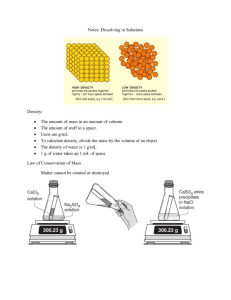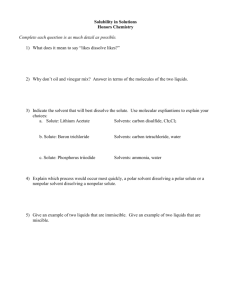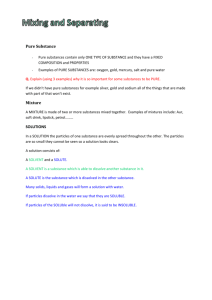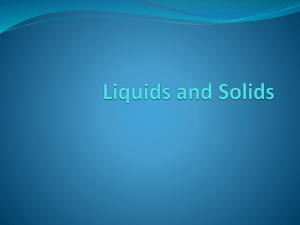Vocabulary: Unit 2 Matter
advertisement
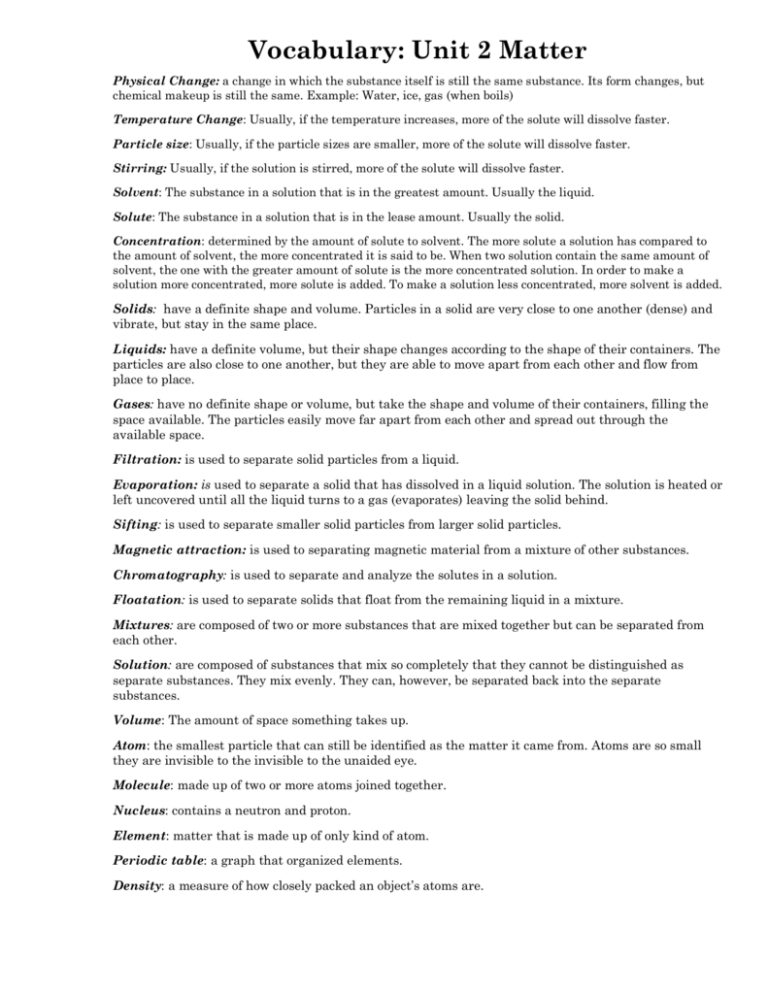
Vocabulary: Unit 2 Matter Physical Change: a change in which the substance itself is still the same substance. Its form changes, but chemical makeup is still the same. Example: Water, ice, gas (when boils) Temperature Change: Usually, if the temperature increases, more of the solute will dissolve faster. Particle size: Usually, if the particle sizes are smaller, more of the solute will dissolve faster. Stirring: Usually, if the solution is stirred, more of the solute will dissolve faster. Solvent: The substance in a solution that is in the greatest amount. Usually the liquid. Solute: The substance in a solution that is in the lease amount. Usually the solid. Concentration: determined by the amount of solute to solvent. The more solute a solution has compared to the amount of solvent, the more concentrated it is said to be. When two solution contain the same amount of solvent, the one with the greater amount of solute is the more concentrated solution. In order to make a solution more concentrated, more solute is added. To make a solution less concentrated, more solvent is added. Solids: have a definite shape and volume. Particles in a solid are very close to one another (dense) and vibrate, but stay in the same place. Liquids: have a definite volume, but their shape changes according to the shape of their containers. The particles are also close to one another, but they are able to move apart from each other and flow from place to place. Gases: have no definite shape or volume, but take the shape and volume of their containers, filling the space available. The particles easily move far apart from each other and spread out through the available space. Filtration: is used to separate solid particles from a liquid. Evaporation: is used to separate a solid that has dissolved in a liquid solution. The solution is heated or left uncovered until all the liquid turns to a gas (evaporates) leaving the solid behind. Sifting: is used to separate smaller solid particles from larger solid particles. Magnetic attraction: is used to separating magnetic material from a mixture of other substances. Chromatography: is used to separate and analyze the solutes in a solution. Floatation: is used to separate solids that float from the remaining liquid in a mixture. Mixtures: are composed of two or more substances that are mixed together but can be separated from each other. Solution: are composed of substances that mix so completely that they cannot be distinguished as separate substances. They mix evenly. They can, however, be separated back into the separate substances. Volume: The amount of space something takes up. Atom: the smallest particle that can still be identified as the matter it came from. Atoms are so small they are invisible to the invisible to the unaided eye. Molecule: made up of two or more atoms joined together. Nucleus: contains a neutron and proton. Element: matter that is made up of only kind of atom. Periodic table: a graph that organized elements. Density: a measure of how closely packed an object’s atoms are.





